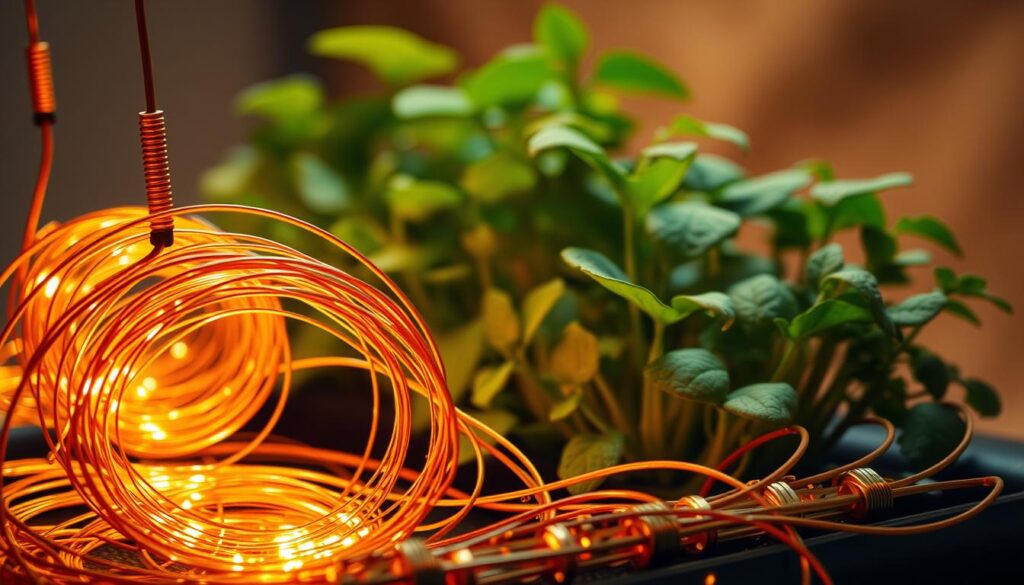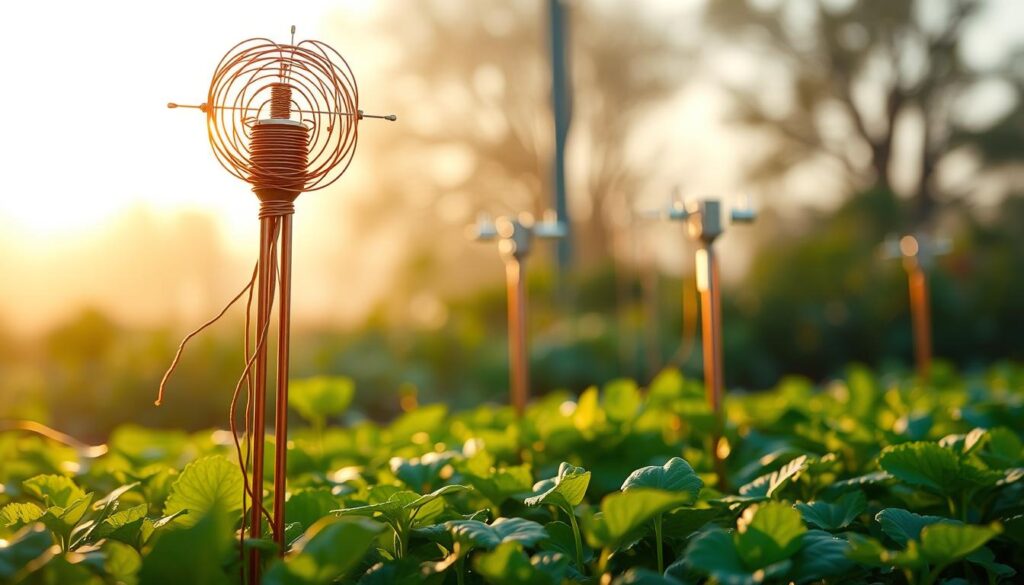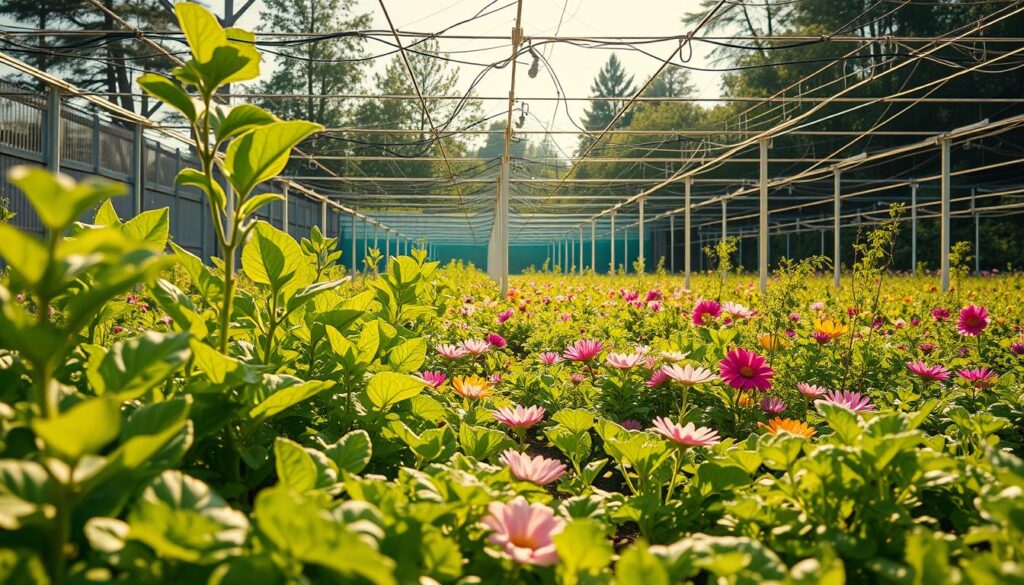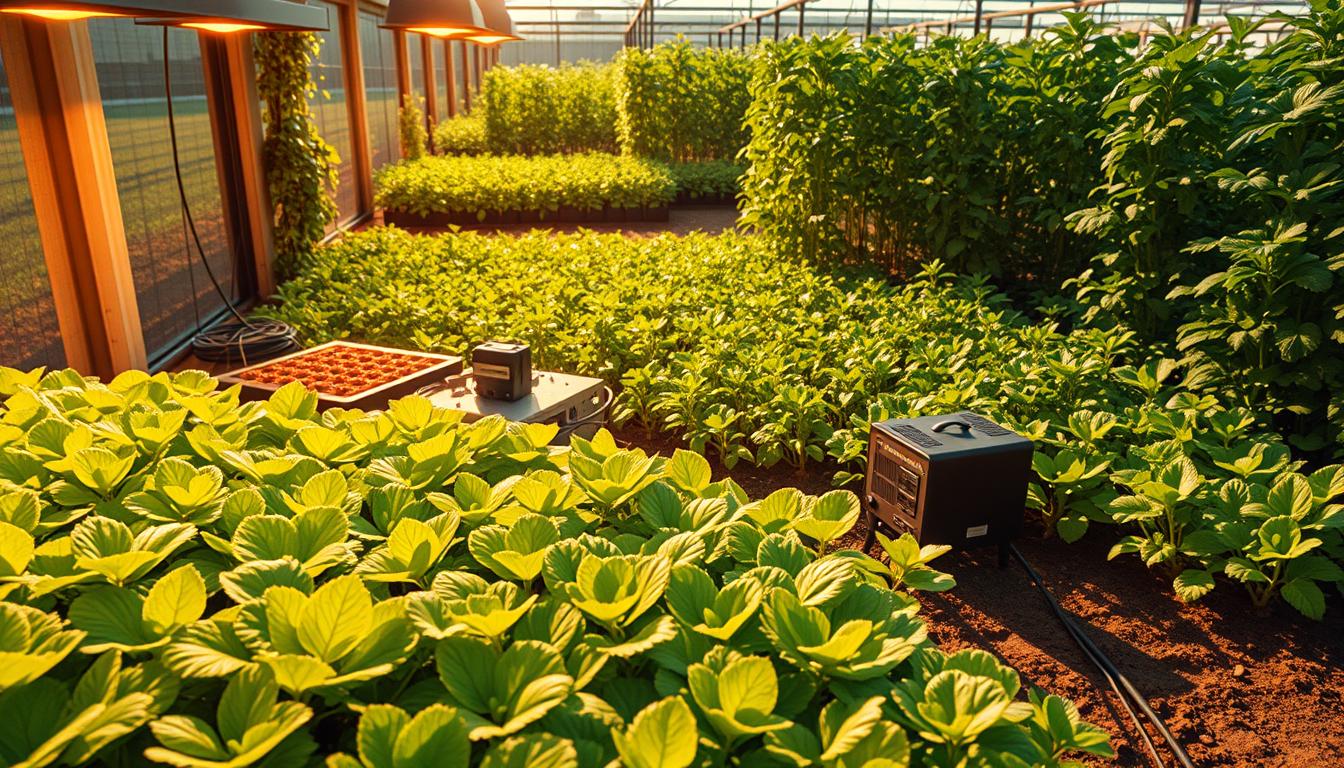Have you ever wondered if plants could thrive with just a little extra energy? A growing trend in gardening is making waves, and the results are stunning. From viral TikTok transformations to backyard experiments, this method is changing how we grow food.
Take Elisa’s garden, for example. Her lush, vibrant plants went from struggling to flourishing in weeks. Others, like Deb & Danelle, saw their tomatoes double in size. Margie Royal even grew blueberries like never before.
How? Simple copper antennas harness natural energy, boosting soil health. This approach reduces the need for chemicals while promoting rapid growth. Some plants even reach incredible heights—up to 50 feet!
Ready to see how it works? Let’s dig in. You’ll be amazed at what’s possible when nature and innovation team up.
Key Takeaways
- Copper antennas enhance plant growth using natural energy.
- Gardens transform quickly, with visible results in weeks.
- Reduces reliance on pesticides for healthier soil.
- Some plants grow taller than traditional methods allow.
- Real-world success stories prove its effectiveness.
Introduction to Electroculture Gardening
Copper wires might be the secret to unlocking your garden’s potential. This method, known as electroculture, uses Earth’s natural electromagnetic fields to supercharge plant growth. By directing atmospheric energy into the soil, gardeners report healthier crops with fewer chemicals.

The idea isn’t new. In the 1920s, Justin Cristofleau pioneered experiments with copper antennas. Later, Viktor Schauberger studied how water and energy interact in nature. Their work laid the foundation for today’s simple setups: spiral copper wires placed near plants.
Unlike conventional farming, which relies on synthetic fertilizers, electroculture works with nature. A viral TikTok from @gardening521 showed tomato plants doubling in size within weeks. Fans claim yields increase by 30–50%, with fewer pests.
Copper’s role is key. It’s a natural conductor, unlike iron-based pesticides that harm ecosystems. Early adopters swear by its ability to boost soil nutrients and reduce water needs. Could this be the future of sustainable gardening? The results speak for themselves.
Traditional Gardening Methods: The “Before” Scenario
Many gardeners face hidden challenges with conventional growing methods. While organic practices like compost and crop rotation promote soil health, they often demand relentless effort. Even thriving plants can mask deeper issues—like dependency on store-bought fertilizer or pest traps.

Common Practices and Limitations
Typical organic gardening relies on:
- Composting: Boosts nutrients but requires space and time.
- Natural pesticides: Less toxic but struggle with persistent pests.
- Crop rotation: Prevents soil depletion but needs meticulous planning.
Mainstream agriculture worsens the problem. Iron-heavy pesticides, for example, strip nutrients from the earth. Margie Royal saw this firsthand—her 2022 blueberry yield was pitiful despite rigorous care.
Elisa’s Garden in 2020
Elisa’s garden flourished with organic methods, but she noticed a pattern. Each season required more chemicals to maintain results. “I was stuck in a loop,” she admits. “Buy fertilizer, fight pests, repeat.”
Her experience mirrors a wider cycle: healthy harvests often hinge on synthetic inputs. Without them, plants falter—and the garden becomes a costly chore.
The Electroculture Transformation
What if your garden could tap into invisible forces for explosive growth? From copper pipes to old holiday lights, everyday items become tools to harness Earth’s energy. The results? Healthier plants, fewer pests, and jaw-dropping yields.

Materials and Setup
You don’t need fancy gear to start. Here’s what works:
- Copper pipes: Deb & Danelle used hardware store pipes wrapped around wooden sticks.
- Upcycled wires: Margie Royal repurposed Christmas light wiring into spiral antennas.
- Bare wire coils: Elisa’s garden thrived with hand-twisted spirals atop wooden rods.
Placement matters. Aim for:
- Height: 2–4 feet above ground (taller for trees).
- Spacing: One antenna per 4×4 foot bed.
- Orientation: North-south alignment maximizes energy flow.
How It Works
The copper acts like a lightning rod for atmospheric energy. Viktor Schauberger’s research shows this creates a vortex, pulling nutrients upward through plant sap. “It’s like giving your soil a caffeine boost,” says Margie.
“I stripped old holiday lights, coiled the wire, and stuck them in my blueberry patch. Two months later, I had berries the size of quarters!”
| Material | Cost | Best For |
|---|---|---|
| Copper pipes | $10–$20 | Permanent beds |
| Upcycled wires | $0–$5 | Small gardens |
| Commercial kits | $50+ | Large-scale setups |
Safety tip: Bury wire ends 6 inches deep to avoid tripping. No electricity needed—just let nature do the work.
Electroculture Before and After: Documented Results
Proof is in the plants: real-world results show stunning changes with minimal effort. From doubled tomato yields to tripled berry harvests, these transformations happened in weeks—not seasons. Here’s how three gardeners turned skeptics into believers.

Elisa’s Garden: A Visual Comparison
Elisa’s TikTok side-by-side videos went viral. Her kale, once stunted, grew 50% larger with copper wire antennas. The secret? Energy redirected into the soil boosted nutrient uptake. “I stopped buying fertilizer,” she says. “The plants just… took off.”
Deb & Danelle’s Tomato Experiment
Their tomatoes were a month behind schedule—until growth exploded. In three weeks, vines hit 4 feet. Yield jumped 5x, with zero pests. “We joked about ‘suspicious antennas,’” Deb admits. “But nobody’s laughing now.”
Margie Royal’s Blueberry Boom
Margie’s 2022 harvest lasted two weeks. In 2023? Berries ripened from June to September. Yield tripled, and new bushes sprouted naturally. Even turtles visited—a sign of balanced garden ecology. “It’s like the land woke up,” she marvels.
| Garden | Improvement | Timeframe |
|---|---|---|
| Elisa’s Beds | 50% larger veggies | 4 weeks |
| Deb’s Tomatoes | 5x more fruit | 3 weeks |
| Margie’s Berries | 3x yield + new bushes | 1 season |
These results aren’t luck—they’re repeatable. With simple wire setups, anyone can unlock their garden’s hidden potential.
Conclusion: Is Electroculture the Future of Gardening?
Could copper antennas revolutionize how we grow food? Three successful experiments prove this method boosts plant health and yield. From small garden beds to potential farm use, the future looks bright for energy-based growing.
Unlike chemical-dependent farming, this approach aligns with global sustainability goals. Copper’s reusability beats single-use plastics, while improving soil vitality. UN reports highlight the urgent need for such innovations.
Ready to test the benefits? Start with @gardening521’s tutorials or Cultivate Elevate’s guides. Grab some wire—your plants might just surprise you.

